Nation
Nigerian Arts, Expression Of Diverse Culture, Tradition And Religion
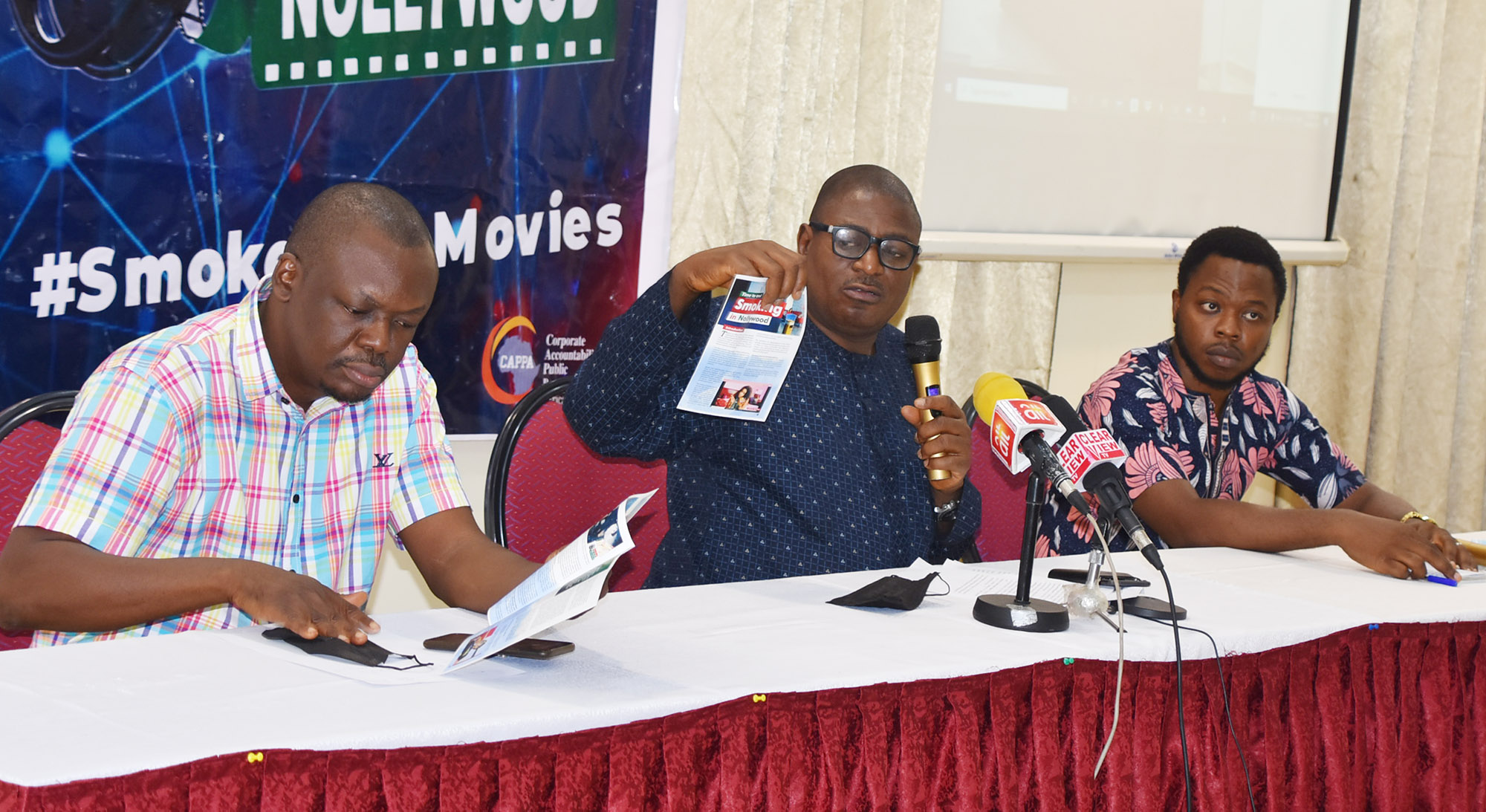
Arts, according to Merriam Webster Dictionary, means “something that is created with imagination and skill that is beautiful or that expresses important ideas or feelings”. It could also mean methods and skills used for painting, sculpting, drawing etc.
The Oxford Advanced Learner’s Dictionary defines arts as “The use of imagination to express idea or feelings particularly in drawing or sculpture”.
While Njoku Moses of Affinity Art Gallery notes that the story of Art could be simply put as the story of civilisation and evolution of man. Most of the materials and clues employed by ethnographers and anthropologists in constructing the story of the early man are largely based on the artistic objects and instruments left behind by the early man.
In the pre-colonial era almost all over the 250 ethnic groups and languages that make up the entity named Nigeria by the British colonial masters, practised one form of art or the other. Like in most African countries including Nigeria, arts is inseparable from their religion. Arts is seen as the agency through which their religion is given expression.
Prior to the coming of the colonial masters, Nigeria was a melting pot of artistic explorations, Nigerians used their art to interpret their world as they see it as well as concretise saw their cosmological views on life and esoteric ideas. They employed art in the various cultural celebrations and ceremonies because of the pantheist nature of the traditional religion.
The early Nigerian society, produced a large collection of ancestral images and gods, spirit entities, natural elements and, forces such as wind, fire and water and land were given recognition as possessing spiritual authority and required reverence. They therefore made art object to represent the essence and attributes of these supposed forces. This they did with the hope of subduing or at least appeasing them in some cases, harness this power and by so doing be able to bring them under some sort of control or form some kind of pact with them.
A close study of the traditional art in Nigeria shows that most of the artifacts and cultural pieces produced by the different cultural group are largely grouped within the boundaries of these mediums, stones, Terracotta, woods, Bronze, paintings and crafts.
These include: Esie And Ikom Stone Sculpture.
Though Esie is a predominantly Yoruba community, the origin and the identity of the makers of the stone sculptures have remained in obscurity, crystallising into different mythological stories by the community.
It has however been established that the Esie stone sculpture is a composition of about a thousand soup stone sculptures depicting both human and zoomorphic features. The human figures represent people engaged in various human daily activities. The stone sculptures represent a cosmopolitan collection of different cultures with features such as sophisticated hair styles dresses, tribal marks, necklaces and bracelets with multiple cultural traits that connect them with different ethic groups surrounding the area. The Esie stone works are also recognised as the largest collection of stone carving in Africa. The Ikom monoliths of Cross River State represent the second yet known largest collection of a handful stone sculptures the stone works are found in an area inhabited by the Ekoi people along the bank of Cross River. The Ikom figures are generally those of humans and are highly geometricalised measuring between 2 to 6ft. The appearance of beards in all figures clearly shows that most of them are males, scientific researches on this works dates them to around 200 AD
Terracotta Culture
In Nigeria, almost every cultural group possesses one form of terracotta art or the other. the Nok culture is dated to have flourished between the years 2000BC and 300AD making it the oldest form of traditional art not just in Nigeria, but West Africa. The following are the stylistic characters of Nok Art, complicated coiffure high geometricism with cylindrical heads, perforated eyes, nose, mouth and ears, semi circular and triangular eyes and lids etc.
Aside from the Nok culture, Ife Terracotta works are another notable ancient traditional art, emanating from south western Nigeria, dating as far back as 12-15 centuries AD. Ife Art is located at the heart of Yoruba ancestry
Wood Carvings
Scholars have also established that Nigeria possesses the largest collection of sculptural works in sub Saharan Africa; most of the artwork are on wood and are applied to different uses. This was possible due to the diversity in cultural abundance and most importantly as a result of the surplus abundance of timber made possible by the country’s location within the tropical rain forest region of Africa. Therefore almost all cultural groups in Nigeria possess one form of wood carving tradition with notable styles and characteristics to them
Ancestral Figures
Most ethnic groups in Nigeria have a tradition of carving ancestral figures. In Yoruba land, they have the Ibeji figures, these figures are done to celebrate the birth or death of twins in Yoruba tradition. It is backed by the people’s belief that twins are powerful spirits who are capable of bringing wealth to their families or misfortune to those who do not honour them.
In the Igbos of the South Eastern Nigeria, one of the most popular and ancestral figures come in the form of Ikenga wood carving. Ikenga is usually used to denote the power of a man’s right hand and his accomplishments, it is represented usually by a figure holding different things such as horns and swords. This practice of Ikenga carving has penetrated other cultures around the Igbo’s such as Edo who call it Ikengaobo and the Igala who call it Okega.
Doors And Wooden Posts
The Yorubas have a rich tradition of carved wooden posts and carved chip doors. This style of carving was so highly developed that guild of carvers and artists were developed around it. It was through this important system of traditional art society education that gave birth to 20th century artists like the famous Olowo of Ise, who many scholars have acclaimed as the most important Yoruba artists of the 20th century because of his virtuosity and dexterity in the niche of carved wooden doors and house posts.
Similarly, the Igbos also have a developed system of wood carving of doors and house posts. In the past, the houses of highly placed individuals and the affluent were embellished with these works. In fact, it was used to identify the extent of wealth and social importance of individuals. The Awka guild of carvers was found in Anambra State.
Igbo Ukwu, Ife And Benin Bronze Tradition
The Igbo Ukwu bronze tradition is unarguably one of the most celebrated contributions of the Igbo race to African artistic and technological heritage. The origins and the technology and knowledge as displayed by the complicated and intrinsic design employed by Igbo Ukwu bronze finding still baffle scholars till date. The Igbo Ukwu art heritage is reputed to be the oldest bronze sculpture tradition in sub-Saharan Africa, dated to about 9th century AD.
The ancient city of Ife is widely acclaimed by the Yoruba as the birthplace or the ancestral home of the Yoruba people. Many of the Ife ancient Ife artifacts today have been traced to the dynasty of the Ife King, Oba Obalufo 11, who is highly regarded as patron of the arts. One notable characteristics of the Ife art is the emphasises on the size of the head as being the centre of knowledge, symbol of Ego and destiny etc.
The Ife artists therefore do not observe the rules of proportion in producing their figures but rather usually are made a little larger than the rest of the body. Another notable characteristic of Ife art is in the use of small holes to indicate beards and hairline of masks and faces and the presence of prominent scarification lines running vertically across the whole face.
The Ife’s were also adept in their mastery of copper and its alloys and they produced a handful of works using the material. They also produced Terracotta works. They also produce art works that please the Oba. Great efforts were put into their production to achieve striking naturalism which is one of the most notable attributes of the Ife copper heads which have their facial features well articulated to true representation of the individuals depicted.
Of all the bronze casting traditions found in Nigeria, Benin ranks as the most famous for the great attention to details, mastery of craftsmanship and dexterity with which they were executed. The inventiveness of Benin civilisation and art were first brought to western public view through the infamous punitive British invasion of the kingdom in 1897 which saw a great number of Benin artifacts carried away by the British soldiers as booties.
The ancient Benin like their Yoruba counterpart placed great importance on the head as a chief part of the body. They therefore believe that the head is imbued with spiritual energy (Ehi) deposited by the creator, Osanobua and his eldest son, Olokun, this is probably the reason why the Benins have a massive repertoire of bronze heads of their Obas during their royal regalia.
Contemporary Nigerian Art
Following the dawn of independence in Nigeria, artistic foraging has continued to flourish, leading to the flowering of a multiplicity of the contemporary styles in art production. Though the acquisition of formal western education, Nigerian art scene has become individualised, detribalised and universal with little common traditional traits, still noticeable in the corpus of works addressed today as contemporary Nigerian Arts Globalisation influences and current sociocultural and political issues have contributed to a proliferation of styles and techniques.
Nation
HMSPR Oil, NCDMB, NIMASA, Stakeholders Praise Tamrose for Phenomenal Growth, Exemplary Local Content Capacity Building and Financial Fidelity …Pledge Increased Financial and Institutional Support for Indigenous Companies
The Honourable Minister of State for Petroleum Resources, Oil, Senator Heineken Lokpobiri, has renewed the Federal Government’s commitment to unlocking wider financial and institutional support for indigenous oil and gas service companies, citing the success of Tamrose Limited and the Nigerian Content Intervention Fund (NCI Fund) as a strong demonstration of what structured, accessible support can achieve.
Speaking at a landmark stakeholder event held at the Nigerian Content Development and Monitoring Board (NCDMB) Headquarters in Yenagoa, the Minister commended Tamrose Limited for its financial discipline and operational growth following the full repayment of its $10 million NCI Fund facility. He noted that the company’s progress underscores the importance of expanding support mechanisms to enable more Nigerian-owned companies to scale capacity and deepen their participation in the country’s offshore and marine logistics sector.
He said, “Over 70 companies have accessed the NCI Fund, yet only 21 have fully repaid their loans — and Tamrose is one of them. Their achievement reflects the very purpose for which the Fund was created: to strengthen local capacity and empower Nigerian service companies to compete at home and across Africa. Through this support, Tamrose has not only grown its operations but expanded beyond Nigeria’s shores, increasing its fleet from four vessels to fifteen, creating jobs for Nigerians, and setting a clear benchmark for operational excellence. As Minister and Chairman of NCDMB, our commitment is to continue fostering this kind of growth by ensuring that indigenous companies receive the support they need to scale, thrive, and deepen their contribution to the nation’s oil and gas sector.’’
Also speaking on behalf of the Executive Secretary of NCDMB, Engr. Felix Omatsola Ogbe, the General Manager, Corporate Communications & Zonal Coordination, Esueme Dan Kikile, described Tamrose as an example of the outcomes envisioned when indigenous firms apply discipline, capability, and innovation in their operations noting, “Today is not just a celebration of one company; it is a reaffirmation of what is achievable through the Nigerian Content framework. Tamrose has shown strong leadership, financial fidelity, and accountability. Their growth—from a small operator to a major marine logistics service provider—is proof that the NCI Fund is working. This is why we will continue to support more credible Nigerian companies to access this fund and expand their capacity.”
The event themed “Celebration of Growth and Impact” hosted by Tamrose in collaboration NCDMB, brought together senior government officials, leaders of international and indigenous oil companies, financial institutions, traditional rulers, and other strategic partners. Distinguished guests included Dr. Olasupo Olusi, Managing Director of the Bank of Industry; Dr. Dayo Mobereola, Director-General of NIMASA; Rear Admiral Gboribiogha John Jonah (Rtd), former Deputy Governor of Bayelsa State; and representatives of Keystone Bank, ExxonMobil, First E&P, and Oriental Energy.
In his remarks, Mr. Ambrose Ovbiebo, Executive Chairman of Tamrose Limited, expressed appreciation to the Ministry, NCDMB, and Bank of Industry for their support and reiterated the company’s commitment to strengthening indigenous capacity in offshore marine logistics. He said, ‘’We are gathered here today using Tamrose as a point of contact, a convergence and amplification of the voices of all Nigerian entrepreneurs in the oil and gas sector and beyond. We are here to say loudly that Nigeria can work, and that indigenous Nigerian companies can scale and dominate Africa and indeed the world — with the right government and institutional support. In 2019, Tamrose accessed and secured a US $10 million facility through the NCI Fund. That singular support from NCDMB turned out to become not just pivotal, but a foundational catalyst that has propelled and continues to accelerate our growth and evolution as a company. Since then, our operations have grown from four vessels to fifteen active units, comprising ten security patrol vessels and five platform supply vessels — all purpose-built and carefully selected, to safely deliver our hallmark excellent services of reliability and efficiency. ‘’
Over the years, Tamrose Limited has consistently demonstrated its commitment to indigenous capacity development, human capital growth, and community empowerment through a range of initiatives. Since accessing the NCI Fund in 2019, the company has expanded its fleet from four to fifteen vessels — achieving about 300% fleet growth and extending operations from Nigeria to Angola while proudly flying the Nigerian flag everywhere they go. Tamrose has created nearly 250 direct jobs, supported over 600 indirect family livelihoods across the maritime ecosystem, and trained more than 100 cadets under the Tamrose Cadetship Training Scheme to international seafaring standards. The company has also enhanced healthcare accessibility for its workforce, enrolling over 1,500 employees in HMOs, and significantly accelerated NCDMB’s goal of achieving 70% local content by 2027. Beyond business growth, these initiatives underscore Tamrose’s ongoing commitment to building a strong, skilled, and sustainable Nigerian maritime sector.
Nation
HYPREP Probes Overhead Tank Collapse …Plans To Supply Water In 65 Ogoni Communities
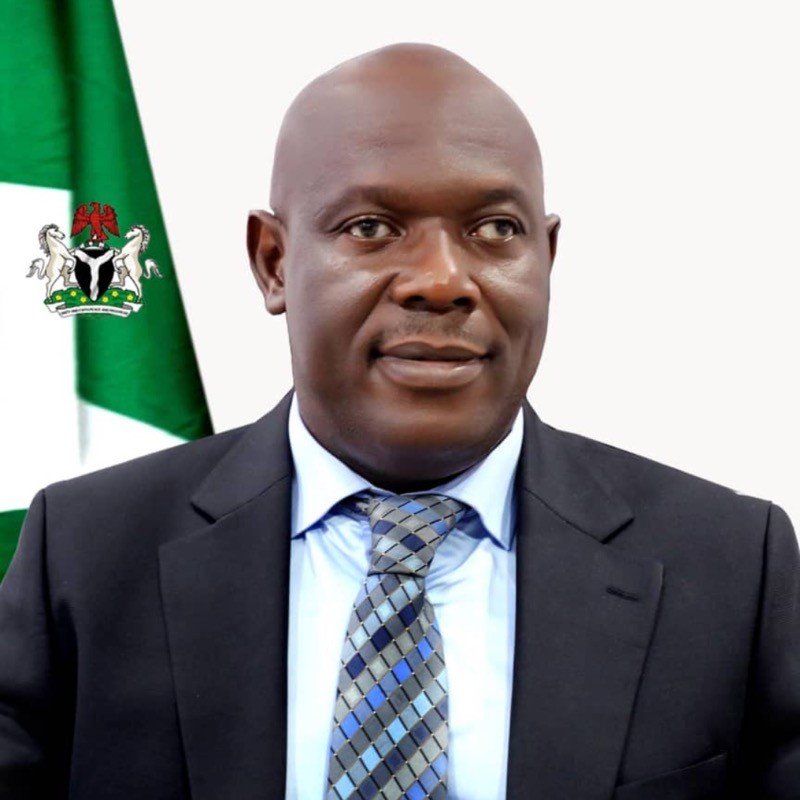
The Hydrocarbon Pollution Remediation Project (HYPREP) has taken prompt steps to unravel the circumstances surrounding the collapse of the overhead tank of the Gwara Water Station recently commissioned by the Minister of Environment, Malam Balarabe Abbas Lawal in Ogoniland, Rivers State.
This is even as the Project has restated its determination and commitment to supplying quality potable water to 65 Ogoni communities before the end of the year.
HYPREP said while addressing journalists in Port Harcourt that it has commenced an investigation into the collapse of the overhead tank at the Gwara Water Station in Khana Local Government Area of Rivers State.
The high-level committee set up by the Project Coordinator, Prof Nenibarini Zabbey as an interim measure, is mandated to determine the immediate and remote causes of the incident.
The Vice Chairman of the committee, Barrister Gowon Ichibor while addressing newsmen said the committee has already swung into action, as it has visited the site of the incident to take stock and assess the situation.
Barrister Ichibor noted that the committee is firmly on top of the situation, as it is poised to carry out a painstaking investigation to unravel the immediate and remote causes of the unfortunate incident.
He further indicated that it is hasty and premature at this point, to pinpoint what might have caused the incident but promised to furnish the public with all necessary information in connection with the overhead tank collapse as soon as possible.
While assuring affected communities of HYPREP’s determination to restore the water facility as quickly as possible, he said the committee would tidy up its work in less than no time and promptly brief the press on its findings.
The committee did not, however, foreclose the possibility of recommending appropriate punitive measures and sanctions to be meted out to culprits at the end of its assignment, to prevent future occurrences.
Meanwhile, HYPREP’s Head of Communications, Dr Enuolare Mba-Nwigoh, who also lent his voice, described the incident as a temporary setback, as the Project would take appropriate and prompt actions to restore potable water supply to the affected Ogoni communities.
He also reaffirmed HYPREP’s commitment to upholding global best practices, standards and quality in the execution of projects, and sympathised with the affected communities over the unfortunate incident, saying, 16 water facilities have already been commissioned, which are effectively and satisfactorily serving over 40 Ogoni communities.
With the collapse of the overhead tank of the Gwara Water Station, he revealed that 40 Ogoni communities are currently enjoying potable water.
The head of communications further disclosed plans by HYPREP to provide potable water to 65 Ogoni communities before the end of the year.
While regretting the unfortunate incident, Dr Mba-Nwigoh urged Ogoni people and residents of Gwara community to remain calm, peaceful and law-abiding, and eschew all forms of speculations and rumour-mongering, as the Project is on top of its game to remedy the situation.
He reeled out the achievements and milestones so far recorded by HYPREP, saying, the Ogoni cleanup programme is very much on course.
It would be recalled that HYPREP had earlier in a statement said it was deeply disturbed by the collapse of the overhead tank at Gwara Water Station, stressing that the
Project Coordinator, Prof Nenibarini Zabbey, had set up a high-level committee to determine the immediate and remote
causes of the incident.
It further noted that the committee had already visited the site and begun a detailed investigation to establish whether the collapse resulted from structural failure or possible third-party interference.
HYPREP, in a statement signed by its management, expressed concern over the incident and sympathised with the Gwara community, urging residents to remain calm as efforts are being made to restore the damaged facility and resume water supply to affected areas.
The Project assured that it remains committed to delivering quality projects that meet international standards, adding that internal and external quality control measures have been introduced, including the engagement of EcoProject as Project Consultant, supervision by the Monitoring and Evaluation Unit, and oversight by water supervisors.
It noted that aside from this isolated case, 16 water stations have been commissioned across Ogoniland, providing water to over 40 communities, with some facilities operating successfully for more than two years.
The Project added that sustainability plans have been put in place to ensure continuous water supply to communities. These include the formation of Water Consumers Associations (WCA), construction of solar farms for alternative power, and training of laboratory staff.
It also stated that one of the key features of the HYPREP water projects is the establishment of laboratories to ensure that water supplied to communities meets the World Health Organisation (WHO) standard.
HYPREP reaffirmed its commitment to quality service delivery and assured that all necessary steps are being taken to address the situation and prevent future occurrences.
The Project has also set up a technical sub-committee over the collapse of the overhead tank of the Gwara Water Station, to foster and promote accountability in the implementation of projects.
Nation
Tinubu Committed To Environmental Sustainability, Benefits To Ogoni–Minister

As the Ogoni cleanup programme being implemented by the Hydrocarbon Pollution Remediation Project(HYPREP) continues to record significant milestones across thematic areas, the Federal Government says such gestures further demonstrate President Bola Tinubu’s commitment under the Renewed Hope Agenda to environmental sustainability and ensuring the Project brings benefits to Ogoni people.
The Minister of Environment, Malam Balarabe Abbas Lawal, who made this assertion during the commissioning of the Bane and Gwara water schemes in Khana Local Government Area of Rivers State, in line with HYPREP’s mandate to provide potable water to Ogoniland, said the provision of potable water is a critical step towards improving public health, reducing waterborne diseases and enhancing the overall quality of life.
The latest commissioning brings the water stations to 16, providing access to potable water to 45 Ogoni communities , a development the Minister explains as part of President Tinubu’s commitment to peace ,environmental justice and socio-economic empowerment in Ogoniland, a beacon of hope for communities long affected by environmental degradation.
Lawal noted that the latest commissioning is restoring hope and dignity to the communities long deprived of this essential resource .
”The provision of potable water is a critical step towards improving public health, reducing waterborne diseases and enhancing the overall quality of life. It also signifies a renewed commitment to ensuring that the people of Ogoniland reap the full benefits of environmental remediation efforts.We
will continue to ensure that communities in Ogoniland have access to clean, safe and sustainable drinking water. With this initiative, we are not just commissioning infrastructure but restoring hope and dignity to the communities long deprived of this essential resource”, he said.
While commending the Project Coordinator of HYPREP, Prof Nenibarini Zabbey, development partners, stakeholders and traditional rulers, among others for their relentless commitment towards the actualisation of these projects, he urged communities to protect and take ownership of the projects, emphasising that their longevity and effectiveness depend on their collective efforts of maintaining and protecting them for posterity.
In his speech at the event, the Project Coordinator of HYPREP, Prof Nenibarini Zabbey maintained that the Project remains resolute in its resolve to ensure that it completes and delivers all projects initiated within the time frame for the use and benefit of Ogoni people in line with the directives of the Governing Council and under the leadership of the Minister of Environment, Malam Balarabe Abbas Lawal.
To achieve this, Zabbey explained that “We
continue to work closely with community leaders, youth and women, contractors and other stakeholders to ensure solutions are identified and implementation continues smoothly.
”We remain guided by the principle of partnership, dialogue, transparency and accountability, knowing that sustainable progress is best achieved through collaboration and mutual understanding. That is the hallmark of HYPREP,” he said.
He appealed to the people to continue to reinforce peace and understanding, using dialogue as a vital tool for resolving disputes, especially around project sites and within communities, noting that the concurrent implementation of over 100 projects across Ogoniland reflects the seriousness and dedication of HYPREP, a momentum that must be sustained through mutual trust and collaboration.
For the Project Coordinator, the event was an ideal opportunity to provide a project status update to Ogoni people, as he excitedly announced the milestone achievements recorded so far to include environmental remediation-94 percent completion in Phase 1 of mangrove restoration; shoreline at 67.1percent; Phase 2 land remediation at 36.55 percent; potable water-14 completed water facilities inaugurated, supplying potable water to 40 Ogoni communities, while the commissioning of the Bane and Gwara water facilities last Saturday increased the number of communities with access to clean and safe water to 45.
Other milestones are the Centre of Excellence for Environmental Restoration (CEER) at 92 percent complete and the processes of operationalising the Centre has begun with the just concluded colloquium, while the Ogoni Power Project is progressing steadily with wayleave compensation and construction works at Bodo and Wiiyaakara substations ongoing. The Ogoni Specialist Hospital is at 76.8 percent with 98.7 percent achieved in the Buan Cottage Hospital. The Ogoni public study being conducted by the World Health Organisation’s (WHO) International Agency for Research on Cancer (IARC); over 7,000 women and youths have benefited from various employment opportunities, while over 5,000 have been trained in multiple skills and provided start-up skits, among other programmes.
Zabbey further hinted of the commencement of some demand-driven skills areas this quarter, which include cybersecurity, full-stack development, mud logging, software development, GIS and commercial diving.
In their separate goodwill messages, the member representing Khana/Gokana Federal Constituency in the House of Representatives, Rt Hon Dumnamene Deekor; Chairman,Great Green Wall, Senator Magnus Ngei Abe; Chairman, Board of Trustees, Ogoni Trust Fund Incorporated, Hon Emmanuel Deeyah; Permanent Secretary, Rivers State Ministry of Water Resources and Rural Development, Mr Nwizug Gordon; representative of the Managing Director/Chief Executive Officer, Renaissance Africa Energy Company Limited and General Manager, Relations and Sustainable Development, Mr Igo Weli; former Secretary to Rivers State Government, Chief Kenneth Kobani; and former Rivers State Commissioner for Environment, Prof Roseline Konya; all commended the Minister of Environment and HYPREP for their commitment to the Ogoni cleanup programme.
Earlier, the Minister and his entourage had paid a courtesy call on Mene Bua Kenwigbara, King D.Y Barile, at his palace, where the former was conferred a chieftaincy title of Mene Anua Le Maa 1 of Ken-Khana Kingdom; and the Project Coordinator of HYPREP as Mene doo Letam 1 of Ken-Khana Kingdom.
Also decorated were the Chairman of Ogoni Trust Fund Incorporated, Hon Emmanuel Deeyah; and the Permanent Secretary, Federal Ministry of Environment, Mahmud Kambari.
Highpoints of the event were the formal commissioning of the Bane and Gwara water facilities by the Minister and the Managing Director/ Chief Executive Officer, Renaissance Africa Energy Company Limited, Engr Tony Attach,represented by Mr Igo Weli; the symbolic issuance of education support Items;and the visit to the Ken Saro-Wiwa Memorial Park for symbolic tree planting by the Minister; the Project Coordinator; BoT Chairman; Senator Abe; Igo Weli; Director General, NEASRA, Prof Innocent Barikor; and Zina Wiwa, the daughter of the legendary environmentalist; and the visit to the CEER.
In two years, the Minister of Environment, has visited Ogoniland five times to commission 16 water stations, supplying potable water to 45 Ogoni communities and ensuring that other projects get equal attention, a clear demonstration of his unflinching commitment to the accelerated implementation of the Ogoni cleanup programme in line with Priority 3, Deliverable 3 of President Bola Ahmed Tinubu’s Renewed Hope Agenda and driven under the visionary and passionate leadership of Prof Nenibarini Zabbey as Project Coordinator.
-
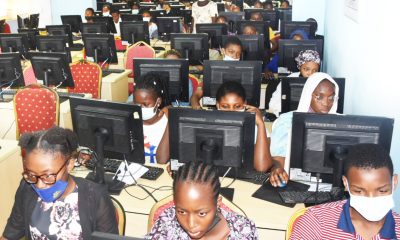
 News5 days ago
News5 days agoJAMB Conducts CBT Promotion Exams For 6,000 Directors
-
Sports5 days ago
Hoopers Ready For NPBL Title Defence – Captain
-
Politics5 days ago
Eno Sacks Aides Who Attended PDP Convention
-
News4 days ago
Rivers Community Marks Annual Wrestling Festival
-
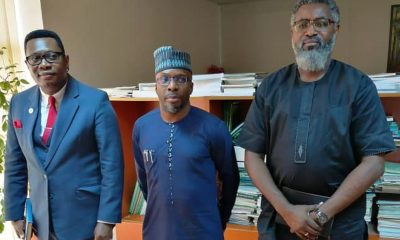
 Business5 days ago
Business5 days agoNigeria’s Inflation Rate Eases To 16.05% – NBS
-

 News18 hours ago
News18 hours agoRSG Woos Investors As PHCCIMA Unveils Port Harcourt Int’l Trade Fair
-
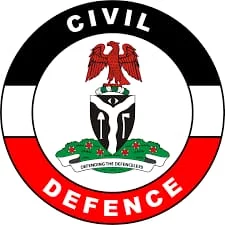
 News5 days ago
News5 days agoNSCDC Arrests 20 Suspects For Alleged Threat To National Security
-
Health5 days ago
Police Hospital Reports More Malaria Incidence

